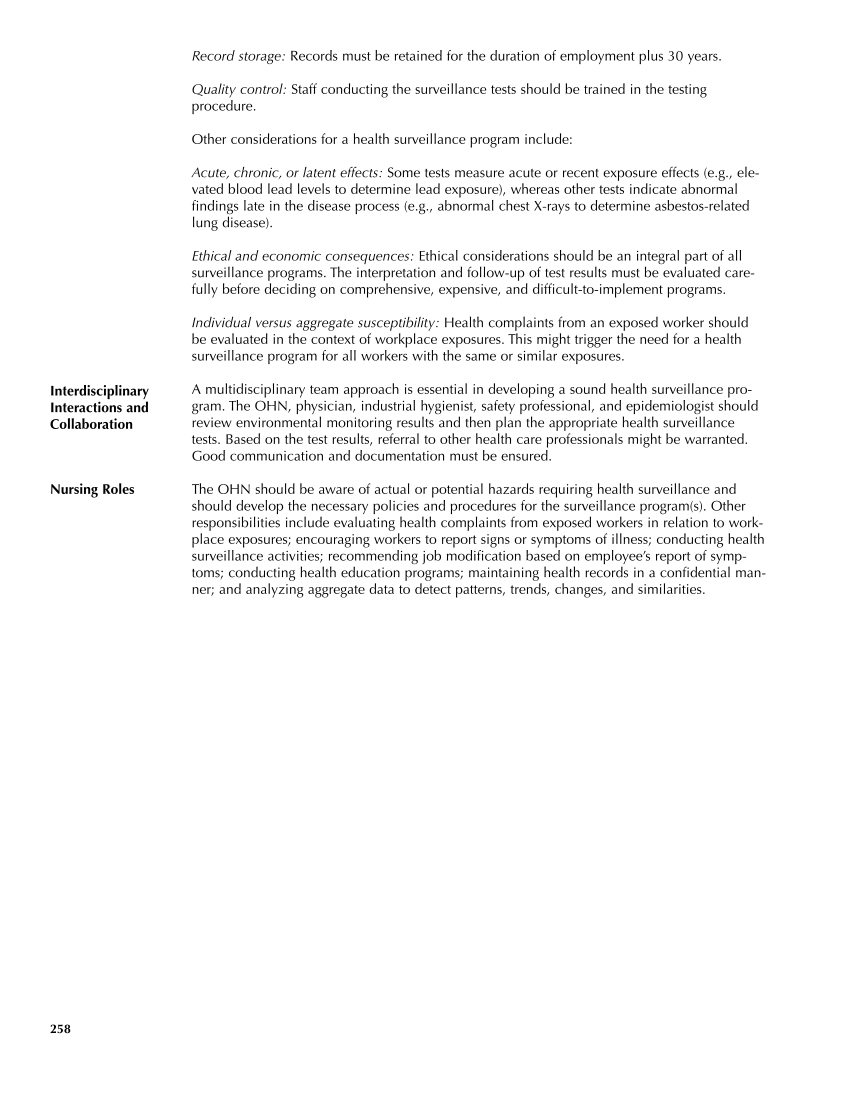Record storage: Records must be retained for the duration of employment plus 30 years. Quality control: Staff conducting the surveillance tests should be trained in the testing procedure. Other considerations for a health surveillance program include: Acute, chronic, or latent effects: Some tests measure acute or recent exposure effects (e.g., ele- vated blood lead levels to determine lead exposure), whereas other tests indicate abnormal findings late in the disease process (e.g., abnormal chest X-rays to determine asbestos-related lung disease). Ethical and economic consequences: Ethical considerations should be an integral part of all surveillance programs. The interpretation and follow-up of test results must be evaluated care- fully before deciding on comprehensive, expensive, and difficult-to-implement programs. Individual versus aggregate susceptibility: Health complaints from an exposed worker should be evaluated in the context of workplace exposures. This might trigger the need for a health surveillance program for all workers with the same or similar exposures. A multidisciplinary team approach is essential in developing a sound health surveillance pro- gram. The OHN, physician, industrial hygienist, safety professional, and epidemiologist should review environmental monitoring results and then plan the appropriate health surveillance tests. Based on the test results, referral to other health care professionals might be warranted. Good communication and documentation must be ensured. Nursing Roles The OHN should be aware of actual or potential hazards requiring health surveillance and should develop the necessary policies and procedures for the surveillance program(s). Other responsibilities include evaluating health complaints from exposed workers in relation to work- place exposures encouraging workers to report signs or symptoms of illness conducting health surveillance activities recommending job modification based on employee’s report of symp- toms conducting health education programs maintaining health records in a confidential man- ner and analyzing aggregate data to detect patterns, trends, changes, and similarities. 258 Interdisciplinary Interactions and Collaboration
Purchased from OEM Press by (ge corporate access). (C) 2013 OEM Health Information, Inc. All rights reserved.












































































































































































































































































































































































































































